#arthur seyss-inquart
Text
At first, the German invaders did little to disturb ordinary life in the Netherlands. They took over the reins of power (appointing Arthur Seyss-Inquart as Reichskommissar in charge of the civil administration), but the structure of government and the operation of services such as the police, the school system, shops, churches and businesses remained more or less the same. Anti-Jewish measures ramped up over time almost imperceptibly: exclusion from air-raid shelters; an 'Aryan Declaration' for members of the Civil Service; a requirement for the registration of all Jews. Then, from February 1941, mass arrests began, slowly at first. Those whom the Heromas had brought to apparent safety in their own country were now under threat, and the translations and new posts in the universities they had once provided were no longer of use.
From November 1941 onwards, regular ads were placed in the bottom left-hand corner of the classifieds page of the local paper. Next to announcements from the dentist, the fashion boutique and the concert hall, there were notices such as this:
J. F. HEROMA
PHYSICIAN
CHANGE OF CONSULTATION HOURS
On Krispijn at 11 am daily, apart from Saturdays
PRIVATE CONSULTATION
daily from 1.30 to 2 pm
Where it mattered, people knew what these messages meant.
Across Holland, as the occupation gained in intensity, networks were being constructed to resist the Nazis: delicate lines of trust that connected couples like the Heromas in Dordrecht to distant others whom they had never met. These webs often clung to the holdfasts of pre-war society, such as medical associations, student fraternities, churches and political groups. Jan Heroma was a doctor and a member of the Social Democratic Workers' Party and also the friend of many Jews in the academic world. This made the house at number 14 Dubbeldamseweg a point of intersection. The little car that the Heromas owned made them unusually mobile, so that journeys between the houses of patients, sometimes far out into the countryside, traced fragile, invisible strands.
— The Cut Out Girl: A Story of War and Family, Lost and Found (Bart van Es)
#book quotes#bart van es#the cut out girl: a story of war and family lost and found#history#military history#antisemitism#politics#ww2#holocaust#netherlands#germany#nazi germany#arthur seyss-inquart#jan heroma#took heroma#dutch resistance#social democratic workers' party (netherlands)
2 notes
·
View notes
Text
September 29-1941 and 1942.
September 29-1941 and 1942.
These are just a few random bits of World War 2 history.
The above picture is of Reich Commissioner Dr. Seyss-Inquart receiving a group of BDM girls: demonstration of gymnastics exercises. Netherlands, location unknown, September 29, 1941. What puzzles me is why would a 39 year old man be interested in a group of teenage girls, doing gymnastics? I can’t help but wonder if this was just the…

View On WordPress
0 notes
Text
On This Day - 16th Oct 1946
Marks 77 years since the Nuremberg executions. (This is gonna be one of my longer posts guys).
At the Nuremberg trials, 12 Nazi war criminals were sentenced to death by hanging: Hermann Göring, Joachim von Ribbentrop, Hans Frank, Wilhelm Frick, Alfred Jodl, Ernst Kaltenbrunner, Wilhelm Keitel, Alfred Rosenberg, Fritz Sauckel, Arthur Seyss-Inquart, Julius Streicher and Martin Bormann (whom was sentenced to death in absentia - as his whereabouts at the time were unknown. It is now believed he died trying to escape Berlin in 1945).
I'll go through each of the executions in order of scheduling:
Hermann Göring.
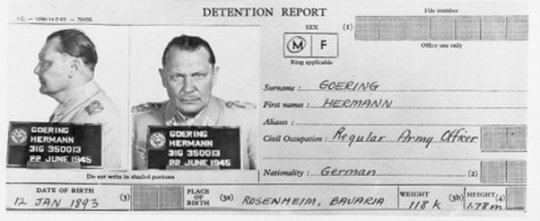
Hermann Göring was the first scheduled to be hung. However, after being denied his request to be shot by firing squad Göring committed suicide in his cell via a cyanide capsule two hours before the scheduled executions were to be carried out. It's unknown how he acquired the cyanide, as cells were checked thoroughly and regularly as well as body searches. There are some rumours however, including one that suggests that the capsule was brought to him by his wife through their departing kiss. Because of his suicide in his cell, no last words were recorded. He was aged 53.
2. Joachim von Ribbentrop
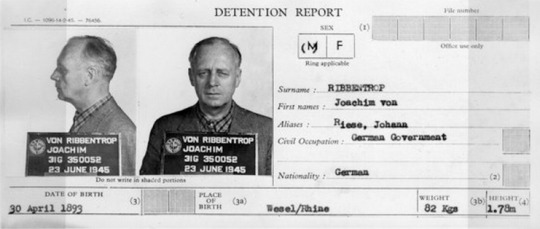
Joachim von Ribbentrop was the first to actually be executed. Upon reaching the dock his last words were: "God protect Germany. God have mercy on my soul. My final wish is that Germany should recover her unity and that, for the sake of peace, there should be an understanding between East and West. I wish peace to the world." It was later recalled that before the hood was placed over his head, he looked over at the Lutheran chaplain and said "I'll see you again." His time of death was recorded at 1:30AM. He was aged 53.
3. Wilhelm Keitel
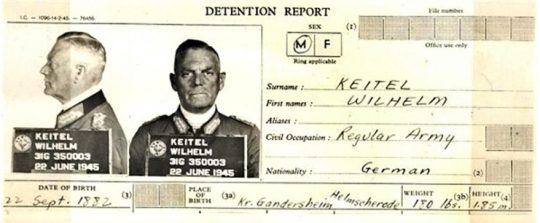
Wilhelm Keitel's last words were: "I call on God Almighty to have mercy on the German people. More than two million German soldiers went to their death for the fatherland before me. I follow now my sons - all for Germany." His time of death was recorded at 1:44AM. He was aged 64.
4. Ernst Kaltenbrunner

(couldn't find his detention report, frustratingly. So have this image instead.)
Ernst Kaltenbrunner's last words were: "I have loved my German people and my fatherland with a warm heart. I have done my duty by the laws of my people and I am sorry my people were led this time by men who were not soldiers and crimes were committed of which I had no knowledge." His time of death was recorded at 1:52AM. He was aged 43.
5. Alfred Rosenberg
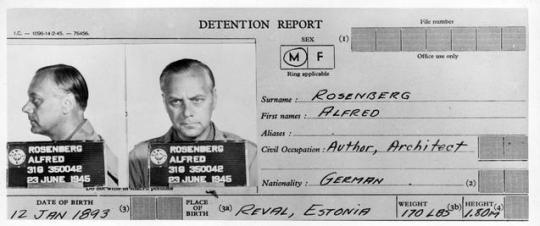
Alfred Rosenberg's last words were: "No." He was the only one who refused to make a final statement. His time of death was recorded at 1:59AM. He was aged 53.
6. Hans Frank
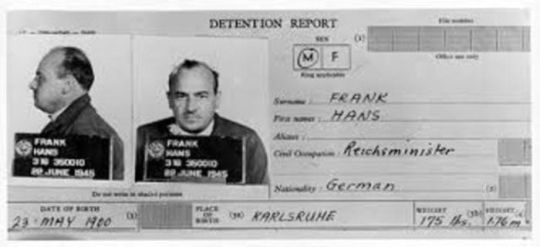
Hans Frank was recorded to be the only one who walked into the chamber with a "smile on his countenance." His last words were: "I am thankful for the kind treatment during my captivity and I ask God to accept me with mercy." His time of death was recorded at 2:08AM. He was aged 46.
7. Wilhelm Frick
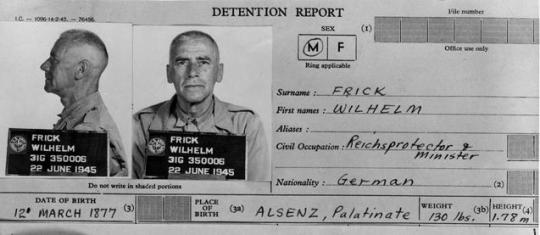
Wilhelm Frick's last words were: "Long live eternal Germany." His time was recorded at 2:20AM. He was aged 69.
8. Julius Streicher

Julius Stretcher's execution was described as melodramatic, and cried out "Heil Hitler" and "The Bolsheviks will hang you one day" before the hood was placed over his head. Julius Streicher's last words were: "Adele, my dear wife." His time of death is unknown. He was aged 61.
9. Fritz Sauckel

(Couldn't find his detention report either, so have this image instead.)
Fritz Sauckel's sentence was considered controversial, considering this his superior, Albert Speer, was sentenced to 20 years imprisonment - just barely avoiding the hangman's noose. His last words were: "I am dying innocent. The sentence is wrong. God protect Germany and make Germany great again. Long live Germany. God protect my family." His time of death was recorded at 2:40AM. He was aged 51.
10. Alfred Jodl
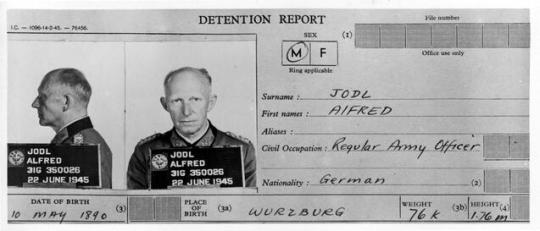
Alfred Jodl's last words were: "I greet you, my eternal Germany." His time of death was recorded at 2:50AM. He was aged 56.
11. Arthur Seyss-Inquart

Arthur Seyss-Inquart's last words were: "I hope this execution is the last act of the tragedy of the Second World War and that the lesson taken from this world war will be that peace and understanding should exist between people. I believe in Germany." His time of death was recorded at 2:59AM. He was aged 54.
The executions were botched. Many of the condemned had slowly strangled to death (such as Joachim von Ribbentrop), and many had hit their heads on the trapdoor as they went down as the trapdoor was too small. One of the condemned took 28 minutes to die.
After the executions, the bodies were taken to a crematorium in Munich (all under false names) and their ashes scattered in the river Isar. The majority of the condemned's war medals were either destroyed or denazified before being handed over to the US finance director for sale to offset the cost of the executions.
27 notes
·
View notes
Text
Today the Church remembers St. Edith Stein, Martyr.
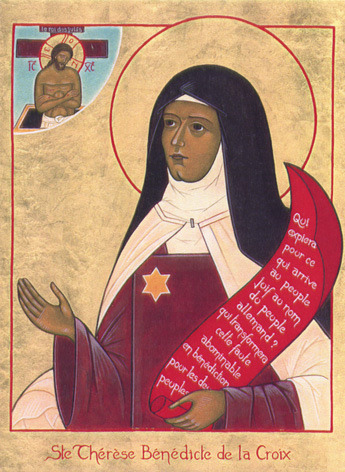
Ora pro nobis.
St. Edith (12 October 1891 – 9 August 1942) was a brilliant philosopher who stopped believing in God when she was 14. Even so, she became so captivated by reading the autobiography of Teresa of Avila that she began a spiritual journey that led to her baptism in 1922. Twelve years later she imitated Saint Teresa by becoming a Carmelite, taking the name Teresa Benedicta of the Cross.
Born into a prominent, religious Jewish family in Breslau, Germany—now Wrocław, Poland—Edith abandoned Judaism in her teens. Moved by the tragedies of World War I, in 1915, she took lessons to become a nursing assistant and worked in an infectious diseases hospital. As a student at the University of Freiburg, she became fascinated by phenomenology–an approach to philosophy. Excelling as a protégé of Edmund Husserl, one of the leading phenomenologists, Edith earned a doctorate in philosophy in 1916. She continued as a university teacher until 1922, when she moved to a Dominican school in Speyer; her appointment as lecturer at the Educational Institute of Munich ended under pressure from the Nazis.
She was baptized on 1 January 1922 in the Roman Catholic Church. At that point, she wanted to become a Discalced Carmelite nun but was dissuaded by her spiritual mentor, the abbot of Beuron Archabbey. She then taught at a Catholic school of education in Speyer. As a result of the requirement of an "Aryan certificate" for civil servants promulgated by the Nazi government in April 1933 as part of its Law for the Restoration of the Professional Civil Service, she had to quit her teaching position.
She was finally admitted as a postulant to the Discalced Carmelite monastery in Cologne on 14 October, on the first vespers of the feast of Saint Teresa of Ávila, and received the religious habit as a novice in April 1934, taking the religious name Teresia Benedicta a Cruce (Teresia in remembrance of Teresa of Ávila, Benedicta in honour of Benedict of Nursia). She made her temporary vows on 21 April 1935, and her perpetual vows on 21 April 1938.
The same year, Teresa Benedicta a Cruce and her biological sister Rosa, by then also a convert and an extern (tertiary of the Order, who would handle the community's needs outside the monastery), were sent to the Carmelite monastery in Echt, Netherlands, for their safety. Ultimately, she would not be safe in the Netherlands. The Dutch Bishops' Conference had a public statement read in all churches across the nation on 20 July 1942 condemning the genocidal racism of National Socialism. In a retaliatory response, on 26 July 1942, the Reichskommissar of the Netherlands, Arthur Seyss-Inquart, ordered the arrest of all Jewish converts who had previously been spared. Along with two hundred and forty-two baptized Jews living in the Netherlands, Stein and her sister Tosa were arrested by the SS on 2 August 1942. Stein and her sister Rosa were imprisoned at the concentration camps of Amersfoort and Westerbork before being moved to Auschwitz. A Dutch official at Westerbork was so impressed by her sense of faith and calm that he offered her an escape plan. Stein vehemently refused his assistance, stating: "If somebody intervened at this point and took away my chance to share in the fate of my brothers and sisters, that would be utter annihilation."
On 7 August 1942, early in the morning, 987 Jews were moved to the Auschwitz concentration camp. They, along with Teresa Benedicta and her sister Rosa, were murdered by the National Socialists in a gas chamber in Auschwitz on 9 August 1942.
Pope St. John Paul II beatified Teresa Benedicta of the Cross in 1987 and canonized her 12 years later, and named her one of the six patron saints of Europe.
The miracle that was the basis for her canonization is the cure of Benedicta McCarthy, a little girl who had swallowed a large amount of paracetamol (acetaminophen), which causes hepatic necrosis. The young girl's father, Emmanuel Charles McCarthy, a priest of the Melkite Greek Catholic Church, immediately called together relatives and prayed for Teresa's intercession. Shortly thereafter, the nurses in the intensive care unit saw her sit up, completely healthy. Ronald Kleinman, a pediatric specialist at Massachusetts General Hospital in Boston who treated the girl, testified about her recovery to church tribunals, stating: "I was willing to say that it was miraculous." McCarthy would later attend Sr. Teresa Benedicta's canonization.
The writings of Edith Stein fill 17 volumes, many of which have been translated into English. A woman of integrity, she followed the truth wherever it led her. One of the more profound things that she wrote was,
“Do not accept anything as truth that lacks Love. Do not accept anything as love which lacks truth. One without the other is a destructive lie.”
Almighty God, by whose grace and power your holy martyr Edith triumphed over suffering and was faithful even to death: Grant us, who now remember her in thanksgiving, to be so faithful in our witness to you in this world, that we may receive with her the crown of life; through Jesus Christ our Lord, who lives and reigns with you and the Holy Spirit, one God, forever and ever.
Amen.
2 notes
·
View notes
Text
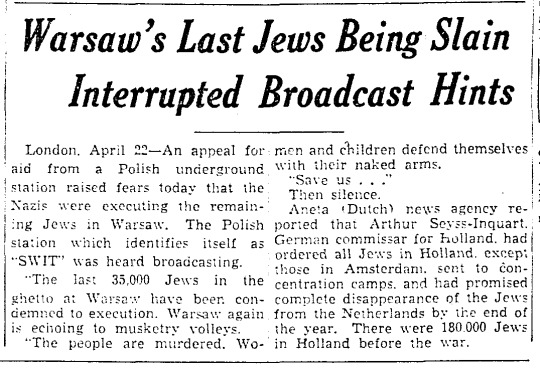
"Warsaw's Last Jews Being Slain Interrupted Broadcast Hints," Toronto Star. April 22, 1943. Page 2.
---
London. April 22 - An appeal for aid from Polish underground station raised fears today that the Nazis were executing the remaining Jews in Warsaw. The Polish station which identifies itself as "SWIT" was heard broadcasting.
"The last 35,000 Jews in the ghetto at Warsaw have been condemned to execution. Warsaw again is echoing to musketry volleys.
"The people are murdered. Women and children defend themselves with their naked arms.
"Save us...."
Then silence.
Aneta (Dutch) news agency reported that Arthur Seyss-Inquart, German commissar for Holland, had ordered all Jews in Holland, except those in Amsterdam. sent to concentration camps, and had promised complete disappearance of the Jews from the Netherlands by the end of the year. There were 180.000 Jewsin Holland before the war.
#warsaw ghetto#warsaw ghetto uprising#warsaw#occupied poland#german occupation of poland#world war II#nazi germany#nazi empire#antisemitism#holocaust#shoah
1 note
·
View note
Photo









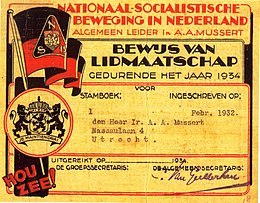
547) Nationaal-Socialistische Beweging der Nederlanden, National Socialist Movement in the Netherlands, Narodowosocjalistyczny Ruch Holenderski – holenderskie narodowosocjalistyczne ugrupowanie polityczne, działające od 1931 roku. NSB zostało założone w 1931 roku w Utrechcie z inicjatywy Antona Musserta, kombatanta I wojny światowej i byłego członka partii liberalnej oraz Cornelisa van Geelkerkena. W jego skład weszło kilka niewielkich nacjonalistycznych, faszystowskich i narodowosocjalistycznych ugrupowań. W 1933 roku zorganizowano w Utrechcie pierwszy zjazd publiczny partii (Landdag), na który przybyło około 600 jej działaczy. Już w 1934 roku władze państwowe wydały zakaz przynależności urzędników państwowych do NSB, zwalczały go również wszystkie Kościoły. W następnym roku w wyborach do parlamentów prowincjonalnych partia uzyskała 7,9% głosów i 2 miejsca w Eerste Kamer. Liczyła wówczas około 47 tysięcy członków – jednak podczas wyborów do Stanów Generalnych w 1937 dostała zaledwie 4,2% głosów (4 miejsca w Tweede Kamer). Ta tendencja spadkowa utrzymała się także w wyborach prowincjonalnych w 1939 (ponownie 4% głosów). Do 1936 w NSB przeważały wpływy włoskich faszystów. Zmieniła to działalność w partii Rosta van Tonningena, który doprowadził do większego zbliżenia z niemiecką NSDAP i SS. Wyrazem tego była audiencja Musserta u Adolfa Hitlera 16 listopada 1936 roku. Głównym organem prasowym NSB był haski dziennik Nationaal Dagblad, redagowany przez Rosta van Tonningena. W latach 1931–1935 istniały paramilitarne bojówki pod nazwą Weerbaarheidsafdeling (WA), jako odpowiednik hitlerowskiego SA, których członkowie byli ubrani na czarno. Partia miała też swoją młodzieżówkę: Nationale Jeugdstorm. Od 1933 działacze NSB stosowali pozdrowienie Hou zee (na podobieństwo Heil Hitler), na swoje określenie używali nazwy kameraad (mężczyźni) i kameraadske (kobiety), a Mussert przyjął tytuł Leidera (podobnie jak hitlerowski Führer). Program NSB nawiązywał do patriotycznych tradycji morskiego imperium Holandii w XVII wieku i uznawał chrześcijaństwo za jedną z podstaw narodowej egzystencji. Partia opowiadała się za stworzeniem silnego rządu, przestrzeganiem narodowego poczucia godności osobistej, wprowadzeniem porządku i dyscypliny w życiu społecznym, politycznym i gospodarczym, solidarnością międzyklasową, priorytetem interesów narodowych nad partykularnymi i grupowych nad jednostkowymi oraz powołaniem korporacji i wprowadzeniem planowania gospodarczego. Jedną z głównych idei NSB było połączenie Holandii z belgijską Flandrią w tak zwaną Wielką Holandię (Dietsland). Po 1936 roku w jej programie pojawiły się silne wątki antysemickie i rasistowskie (do tego czasu jej członkami byli też Żydzi). Zaczęto również popierać agresywną politykę zagraniczną nazistowskich Niemiec i faszystowskich Włoch. Z drugiej strony lider NSB, Anton Mussert, kreował swój wizerunek jako umiarkowanego i pragmatycznego polityka, respektującego demokratyczne reguły życia politycznego, co przyniosło partii sukcesy, zwłaszcza w połowie lat 30. W przeddzień najazdu Niemiec na Holandię władze państwowe zdelegalizowały NSB i internowały prewencyjnie 31 jej działaczy z van Tonningenem na czele (ale bez Musserta). Podczas działań wojennych nie odnotowano żadnych przypadków zdrady ze strony żołnierzy będących członkami NSB; również Mussert potępił i usunął z partii około 100 członków przebywających już od dawna w Niemczech i uczestniczących w dywersyjnych atakach niemieckich spadochroniarzy. Po rozpoczęciu okupacji Mussert zaczął żywić nadzieję zbudowania „Wielkiej Holandii” jako niepodległego państwa pozostającego w sojuszu z III Rzeszą i pod jego prezydenturą. Umacniał go w tym Komisarz Rzeszy w Holandii (stosujący umiarkowany kurs), Arthur Seyss-Inquart. NSB otrzymało od Niemców finansowe i ideologiczne wsparcie, dzięki czemu liczba jej członków wzrosła w połowie 1941 roku do około 100 tysięcy. W sierpniu tego roku reaktywowano paramilitarne bojówki Weerbaarheidsafdeling, a Mussert przybrał tytuł Wodza (De Leider) ruchu. W tym czasie zaangażował się on, wraz z partią, w akcję rekrutacyjną do dwóch pułków Waffen-SS – „Westland ”i „Nordwest” – a następnie Ochotniczego Legionu Holenderskiego, wysłanego na front wschodni do walki z Sowietami. NSB odgrywało podstawową rolę na poziomie niższej administracji: wszyscy nowi burmistrzowie miast byli członkami partii. Jednocześnie coraz większego znaczenia w partii nabierał van Tonningen, który reprezentował pronazistowskie stanowisko i w związku z tym był popierany przez Reichsführera SS Heinricha Himmlera. Uniezależnił on od NSB i jego przywódcy holenderskie SS, pomimo skarg Musserta do Hitlera, i prowadził wielkogermańską propagandę. W grudniu 1942 doszło do spotkania Musserta z Hitlerem, podczas którego ten nie zgodził się na mianowanie lidera NSB szefem kolaboracyjnego rządu, a jedynie uznał w nim wodza narodu holenderskiego. Przeciwny polityce Komisarza Rzeszy, Seyssa-Inquarta, wyższy dowódca SS i Policji, Hans Rauter popierał rywalizujących z Mussertem przedstawicieli radykalnego skrzydła NSB: van Tonningena, van Geelkerena i Feldmeijera (szefa Nederlandsche SS). Stopniowo Mussert tracił kontrolę nad szeregowymi członkami NSB, którzy czynnie współpracowali z niemiecką policją i uprawiali szpiegostwo. Partia, wzorując się na NSDAP, stała się antysemicka i zaczęła brać udział w wystąpieniach przeciwko ludności żydowskiej. Latem 1943 wielu członków NSB wstąpiło do formacji Landwacht Nederland, która pełniła funkcje obrony terytorialnej. Po zajęciu Antwerpii przez aliantów, we wrześniu 1944, większość czołowych działaczy NSB uciekła do Niemiec. Po zakończeniu wojny NSB została zdelegalizowana. Wielu działaczy zostało aresztowanych, a kilku – w tym Antona Musserta – skazano na śmierć.
0 notes
Link
0 notes
Quote
The Germans had by now discovered they weren't welcome, and Seyss-Inquart said as much in a lengthy report to Hitler. Among the Dutch, the opinion that the Netherlands had been wrongly attacked was close to unanimous, he told the führer, adding that few understood or believed the Netherlands had violated its neutral status, and that therefore the invasion was necessary. However, he claimed, some did concur that the Dutch media and emigrants from the Reich had tainted the people's impression of Nazi Germany over the last seven years.
Deeper into his report, he laid out his priority to 'reduce consumption' within the Dutch population in order to acquire supplies for Germany. The Netherlands was rich with goods, he wrote. He assured Hitler that the old government's secretaries general had been kept in their positions only in order to achieve these kinds of goals smoothly, for the Dutch were a difficult bunch, and devoted – out of habit, he said – to their exiled queen. In fact it was she who had asked them to stay at their posts, before fleeing herself. But Seyss-Inquart stressed that these employees understood that the parameters of the job had changed, and that they would now accept orders only from the Reich commissioner himself. With a certain pride, Seyss-Inquart noted that the co-operation of the secretaries general had enabled him to seize an abundance of supplies and send them to Germany, leaving a paper trail of Dutch signatures that made each act look voluntary. Over time, he felt sure the Dutch could be won, through their allegiance to the queen who'd abandoned them rankled. He stressed to Hitler that the population had been told the queen was nothing less than an enemy of the state for allying herself so firmly with the other [Allied] side, and failing to contest [Allied] air raids on her own country.
The Occupied Garden: A Family Memoir of War-Torn Holland
#history#military history#ww2#holocaust#netherlands#germany#nazi germany#arthur seyss-inquart#adolf hitler#queen wilhelmina
3 notes
·
View notes
Photo




Hellsing Ultimate: 9
This is the Commander of Zeppelin Three, the Arthur Seyss-Inquart. We are losing lift. All inter communication ship systems are out.
Zeppelin Three is going down.
#hellsing#hellsing ultimate#gifs#idk if arthur seyss inquart is correct? I just took it from the subtitles for the scene#¯\_(ツ)_/¯
109 notes
·
View notes
Text

• Operations Manna & Chowhound
Operation Manna and Operation Chowhound were co-British & American humanitarian food drops, carried out to relieve a famine in the German-occupied Netherlands, undertaken by Allied bomber crews during the final days of World War II in Europe.
By early 1945, the situation was growing desperate for the three million or more Dutch still under German control. Prince Bernhard appealed directly to Allied Supreme Commander Dwight D. Eisenhower, but Eisenhower did not have the authority to negotiate a truce with the Germans. While the prince got permission from British Prime Minister Winston Churchill and U.S. President Franklin D. Roosevelt, Eisenhower had Air Commodore Andrew Geddes begin planning immediately. On April 23rd, authorisation was given by the Chief of Staff, George Marshall. Allied agents negotiated with Reichskommissar Arthur Seyss-Inquart and a team of German officers. Among the participants were the Canadian future writer Farley Mowat and the German commander-in-chief, General Johannes Blaskowitz. It was agreed that the participating aircraft would not be fired upon within specified air corridors.
The British operation started first. It was named after the food which was miraculously provided to the Israelites in the Book of Exodus. The planning of the operation was initially done by the Royal Air Force. The first of the two RAF Avro Lancasters chosen for the test flight, the morning of April 29th,1945, was nicknamed Bad Penny, as in the expression: "a bad penny always turns up". This bomber, with a crew of seven young men including pilot Robert Upcott of Windsor, Ontario, took off in bad weather despite the fact that the Germans had not yet agreed to a ceasefire. Bad Penny had to fly low, down to 50 feet (15 m), over German guns, but succeeded in dropping her cargo and returning to her airfield. Operation Manna then began in earnest. British aircraft from Groups 1, 3, and 8 took part, flying 145 sorties by Mosquitoes and 3,156 sorties by Lancaster bombers, flying between them a total of 3,301 sorties. These bombers were used to dropping bombs from 6,000 metres (20,000 ft), but this time they had to do their job from a height of 150 metres (490 ft), some even flying as low as 120 metres (390 ft), as the cargo did not have parachutes. The drop zones, marked by Mosquitoes from 105 and 109 Squadrons using Oboe, were: Katwijk (Valkenburg airfield), The Hague (Duindigt horse race course and Ypenburg airfield), Rotterdam (Waalhaven airfield and Kralingse Plas) and Gouda. Bomber Command delivered a total of 6,680 tons of food. Some examples of food dropped was tinned food, dried food and chocolate.
The idea was for people to gather and redistribute the food, but some could not resist eating straight away, which caused some people to get sick and vomit, (and some died) a result that fatty food can have in starved bodies known as Refeeding syndrome. On the other hand, distribution sometimes took as long as ten days, resulting in some getting the food only after the liberation. Nevertheless, many lives were saved, and it gave hope and the feeling that the war would soon be over. Earlier, there had been a distribution of white bread made from Swedish flour that was shipped in and baked locally. A popular myth holds that this bread was dropped from aircraft, but that is a mix-up between the two events. Also, the food was not dropped with parachutes.
On the American side, ten bomb groups of the US Third Air Division flew 2,268 sorties beginning on May 1st, delivering a total of 4000 tons. 400 B-17 Flying Fortress bombers of the United States Army Air Forces dropped 800 tons of K-rations between May 1st to the 3rd on Amsterdam Schiphol Airport. At least one B-17 crew, that of the Stork Club from the 550th squadron received battle recognition despite having no guns for their humanitarian mission, as a result of German flak. Allied aircraft transported more than 11,000 tons of food, saved thousands of lives and set a valuable precedent for the Berlin Airlift in 1948 and 1949 and future humanitarian missions to come. For Seyss-Inquart, his acquiescence to the flights was not enough to save him. After the war, he was tried and convicted as a war criminal at Nuremberg and subsequently executed. At the height of the relief effort, more than 900 bombers a day took to the skies. Although a handful of American aircraft were hit by sporadic German ground fire, none were shot down. As food and salvation fell from the skies, crews saw for themselves the gratitude of the Dutch people in messages such as the field of manicured tulips arranged by one grateful farmer to spell out, “Thank You".
#world war 2#second world war#world war ii#history#humanitarian#wwii#british history#aviation#american history#royal air force#u.s history#us aircraft#us army air force#netherlands#dutch history
81 notes
·
View notes
Photo

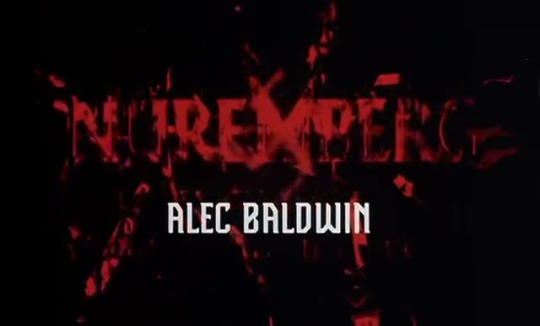
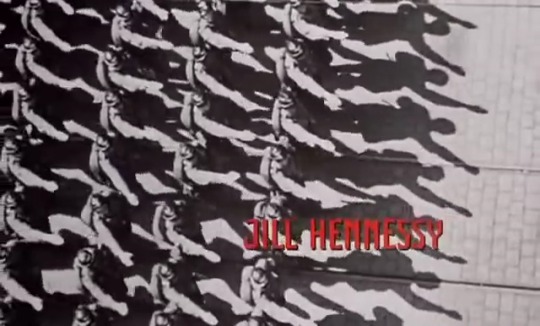

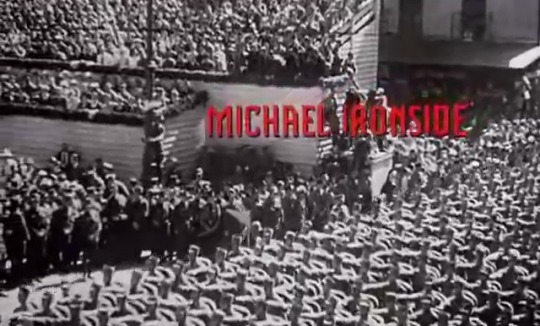
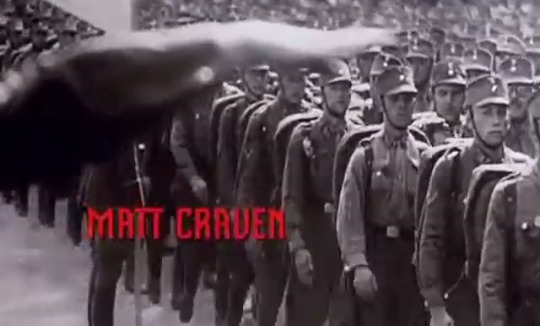
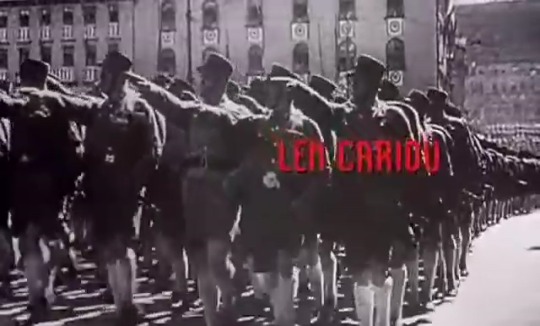
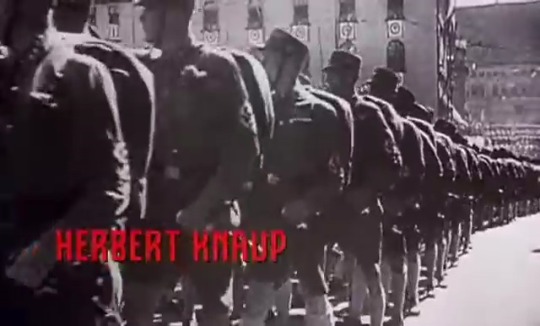


Nuremberg - TNT - July 16 - 17, 2000
Historical Drama (2 episodes)
Running Time: 180 minutes
Stars:
Alec Baldwin as Supreme Court Justice Robert H. Jackson
Brian Cox as Hermann Göring
Christopher Plummer as Sir David Maxwell Fyfe
Jill Hennessy as Elsie Douglas
Matt Craven as Capt. Gustave Gilbert
Christopher Heyerdahl as Ernst Kaltenbrunner
Roger Dunn as Col. Robert Storey
David McIlwraith as Col. John Amen
Christopher Shyer as Brig. Gen. Telford Taylor
Hrothgar Mathews as Thomas J. Dodd
Herbert Knaup as Albert Speer
Frank Moore as Hans Frank
Frank Fontaine as Wilhelm Keitel
Raymond Cloutier as Karl Dönitz
Bill Corday as Alfred Jodl
Ken Kramer as Fritz Sauckel
Max von Sydow as Samuel Rosenman
Sam Stone as Julius Streicher
Douglas O'Keeffe as Baldur von Schirach
Benoit Girard as Joachim von Ribbentrop
James Bradford as Hjalmar Schacht
Frank Burns as Wilhelm Frick
Erwin Potitt as Walther Funk
Tom Rack as Hans Fritzsche
Roc LaFortune as Rudolf Hess
Colm Feore as Rudolf Höss
Robert Joy as Anton Pachelogg
Dennis St. John as Franz von Papen
Griffith Brewer as Konstantin von Neurath
Gabriel Gascon as Erich Raeder
Julien Poulin as Dr. Robert Ley
Alain Fournier as Alfred Rosenberg
René Gagnon as Arthur Seyss-Inquart
Len Cariou as Francis Biddle
David Francis as Geoffrey Lawrence, 1st Baron Oaksey
Len Doncheff as Gen. Iona Nikitchenko
Paul Hébert as Henri Donnedieu de Vabres
Michael Ironside as Col. Burton C. Andrus
Charlotte Gainsbourg as Marie-Claude Vaillant-Couturier
Geoffrey Pounsett as Maj. Airey Neave
Steve Adams as Gen. Lucius D. Clay
Paul Hopkins as Capt. Dan Kiley
Susan Glover as Emmy Göring
Scott Gibson as Lt. Tex Wheelis
#Nuremberg#TV#Historical Drama#TNT#2000#Title#Alec Baldwin#Jill Hennessy#Brian Cox#Christopher Cox#Michael Ironside#Matt Craven#Len Cariou#Herbert Knaup#Charlotte Gainsbourg#Colm Feore#Robert Joy#Max Von Sydow#Christopher Plummer
10 notes
·
View notes
Link
0 notes
Photo

Seyss-Inquart bunker, Wassenaar, August Kubitza, 1942-43.
Arthur Seyss-Inquart served as the Nazi Reichskommissar of the occupied Netherlands. The bunker was camouflaged as a farmhouse, became a national heritage site in 2015 and is currently for sale.
62 notes
·
View notes
Link
The Austrian Chancellor, Dollfuss, tried to crack down on the Socialists and Nazis - political factions that he thought were tearing the country apart. Dollfuss banned the Nazi party.
In 1934, Hitler ordered the Austrian Nazis to create havoc in Austria. This turned into an attempt to overthrow the government. Chancellor Dollfuss was murdered but the attempted coup failed because the Austrian military intervened to back up the government.
In 1934, Italy had an agreement with Austria that it would protect Austria from outside aggression. The Italian dictator, Mussolini, honoured the agreement and moved Italian troops to the Austrian border to deter Hitler from invading.
#history#military history#ww2#austrian anschlüss#july putsch#spanish civil war#germany#nazi germany#austria#greater germany#italy#adolf hitler#engelbert dollfuss#benito mussolini#kurt von schussnigg#arthur seyss-inquart#nazism tw#antisemitism tw
0 notes
Text
Después de una pausa para el almuerzo, mientras Hitler
consultaba con sus asistentes, Schuschnigg fue conducido a
una habitación en la que lo esperaban Ribbentrop y Papen.
Allí le presentaron un borrador del acuerdo que exigía
Alemania. Viena debía aceptar coordinar su política exterior
y económica con el Reich y un intercambio de oficiales del
ejército. El gobierno de Austria debía emitir una amnistía
para los nazis que se estaban pudriendo en sus prisiones y
levantar todas las restricciones a las actividades de los nazis
austríacos. Hitler también exigía el nombramiento de Arthur
Seyss-Inquart, un prominente simpatizante nazi, como
ministro del Interior a cargo de todas las fuerzas de seguridad
austríacas, una jugada que recordaba siniestramente el
primer paso en la toma del poder por parte de los nazis en
Alemania. Cuando Schuschnigg planteó objeciones a varios
puntos, Ribbentrop le advirtió que el acuerdo debía ser
aceptado de manera incondicional. Estas medidas no estaban
sujetas a discusión, dijo Ribbentrop; eran exigencias que
debían cumplirse de inmediato. Era un ultimátum. Thomas Children.
0 notes